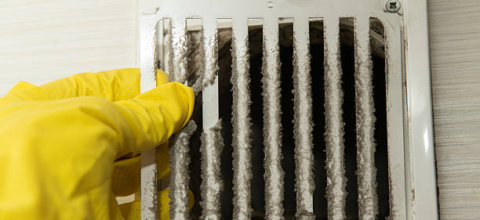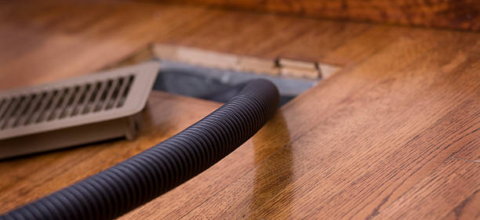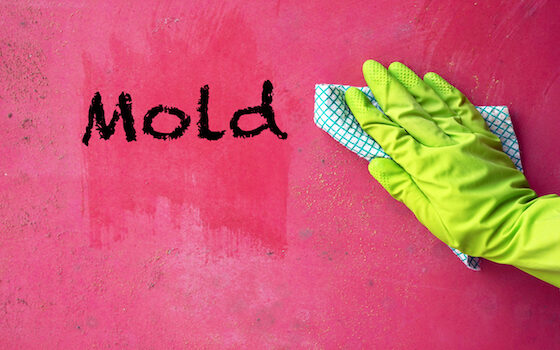Tips to Prevent Mold Growth, Stop Mold Growth Before it Starts!
Football season is just around the corner, and with it are sure to be Thursday nights, Sunday afternoons, and Monday nights with the neighbors over, everyone huddled around the living room TV, cheering on your favorite team. But as you’re making your list of “to-do’s” to prep for game time, consider adding “stop mold growth” to the list, just above “buffalo wings” – because while many homeowners are aware of the dangers of mold, not as many know how to stop mold growth before it starts; and as any good coach will tell you: a good offense is the best defense.
What does mold need to grow?
- A food source such as cotton, leather, wood, drywall, paper products, etc.
- Moisture.
- Optimum temperatures, which is anywhere between 32- and 120-degrees Fahrenheit.
How to stop mold growth
While there’s not much you can do about the food source and temperatures suitable for mold growth, the Environmental Protection Agency (EPA) says there is something you can do about the moisture it needs. To stop mold growth, moisture control is key. The EPA and the Centers for Disease Control (CDC) offer the following tips on how to control moisture in your home:
- Fix leaks and seepage. This could be anything from simple landscaping, to plumbing fixtures, to appliance hoses, to extensive excavation and waterproofing.
- Make sure your crawlspace/ basement is water-proofed but well-ventilated.
- Use exhaust fans in the bathroom and kitchens to remove moisture to the outside instead of into the attic.
- Use dehumidifiers and air conditioners. This is especially important in hot, humid climates to reduce moisture in the air.
- If you don’t already have gutters and downspouts, seriously consider installing them. If you do have gutters, CLEAN THEM OUT! The Absence of gutters, or having clogged gutters can lead to water intrusion via cracks around windows/doors or via cracks in the foundation.
- Open doors between rooms to increase circulation, including closet doors. Circulation carries heat to cold surfaces, so increase air circulation by using fans.
- Pay special attention to carpet on concrete floors. Carpet can absorb moisture, so try to use area rugs which can be taken up and washed often.
Call 800-482-8224 to schedule an appointment with an Amazon Air Duct Cleaning Professional today!

As a business owner, maintaining good indoor air quality directly affects productivity, customer comfort, and your reputation. From the busy retail shops in SoNo to the corporate offices along Route 1, commercial spaces face unique air challenges that require targeted solutions. Research shows that clean indoor environments can boost worker productivity by up to 11% while lowering sick days and turnover. For retail, fresh

Congratulations on completing your home renovation project! After months of planning, construction noise, and living with temporary inconveniences, you can finally enjoy your transformed space. Your kitchen remodel showcases new cabinets and countertops, or perhaps your finished basement now provides the family entertainment area that homeowners love. However, before you fully settle into your newly renovated home, there’s one step that many homeowners overlook

Trenton’s historic neighborhoods are home to beautiful Victorian mansions and Colonial Revival houses, especially in areas like the Mill Hill Historic District. These homes have been around for decades or centuries, and they’re full of character and charm. But owning a historic home means dealing with some unique maintenance challenges. Your chimney is one area that needs extra attention because these older systems work

Connecticut’s beautiful spring and summer months bring lush green lawns across Stamford neighborhoods. But this scenery comes with a challenge for local families: grass pollen season means months of sneezing, watery eyes, and breathing issues that can make outdoor time miserable. Grass pollen season runs from May through July, with June usually being the worst month. During this time, Timothy grass and Kentucky bluegrass
Your split-level home in Paramus has a story. Built during Bergen County’s post-war housing boom, these houses offered families good space at a reasonable price. The staggered floor design fit neatly on smaller lots, and the layout worked well for the era. Split level homes pros and cons were debated even then, but most families appreciated the value these homes delivered. Six decades later,

As a business owner, maintaining good indoor air quality directly affects productivity, customer comfort, and your reputation. From the busy retail shops in SoNo to the corporate offices along Route 1, commercial spaces face unique air challenges that require targeted solutions. Research shows that clean indoor environments can boost worker productivity by up to 11% while lowering sick days and turnover. For retail, fresh

Congratulations on completing your home renovation project! After months of planning, construction noise, and living with temporary inconveniences, you can finally enjoy your transformed space. Your kitchen remodel showcases new cabinets and countertops, or perhaps your finished basement now provides the family entertainment area that homeowners love. However, before you fully settle into your newly renovated home, there’s one step that many homeowners overlook

Trenton’s historic neighborhoods are home to beautiful Victorian mansions and Colonial Revival houses, especially in areas like the Mill Hill Historic District. These homes have been around for decades or centuries, and they’re full of character and charm. But owning a historic home means dealing with some unique maintenance challenges. Your chimney is one area that needs extra attention because these older systems work

Connecticut’s beautiful spring and summer months bring lush green lawns across Stamford neighborhoods. But this scenery comes with a challenge for local families: grass pollen season means months of sneezing, watery eyes, and breathing issues that can make outdoor time miserable. Grass pollen season runs from May through July, with June usually being the worst month. During this time, Timothy grass and Kentucky bluegrass

